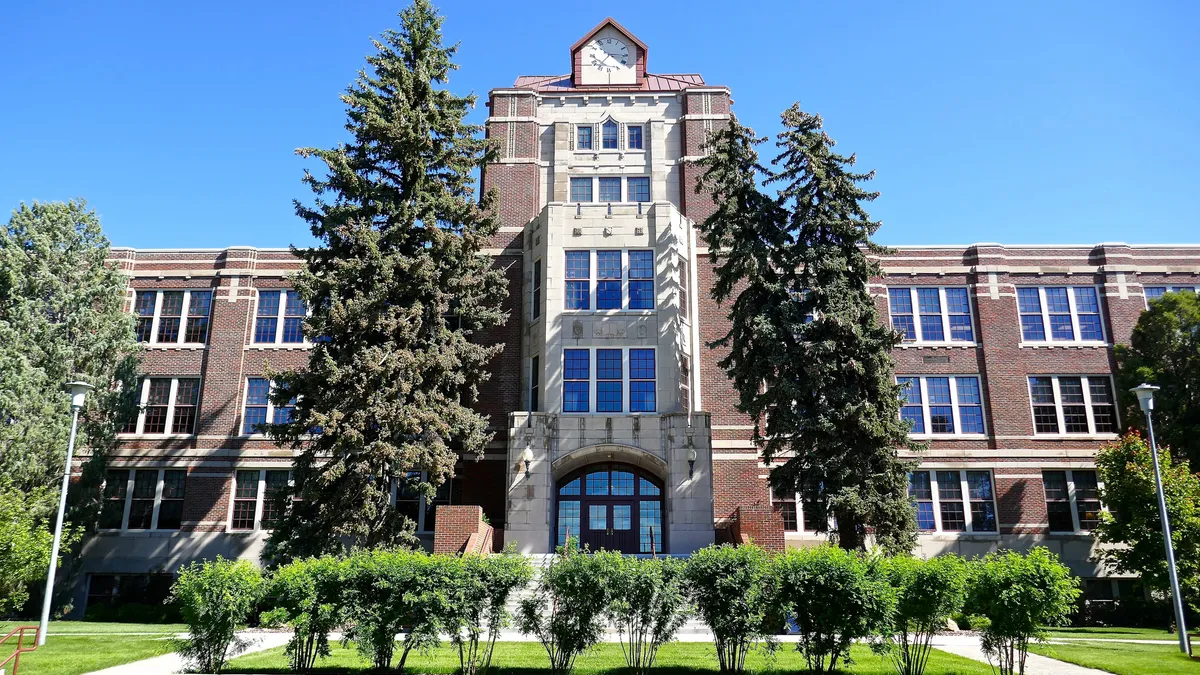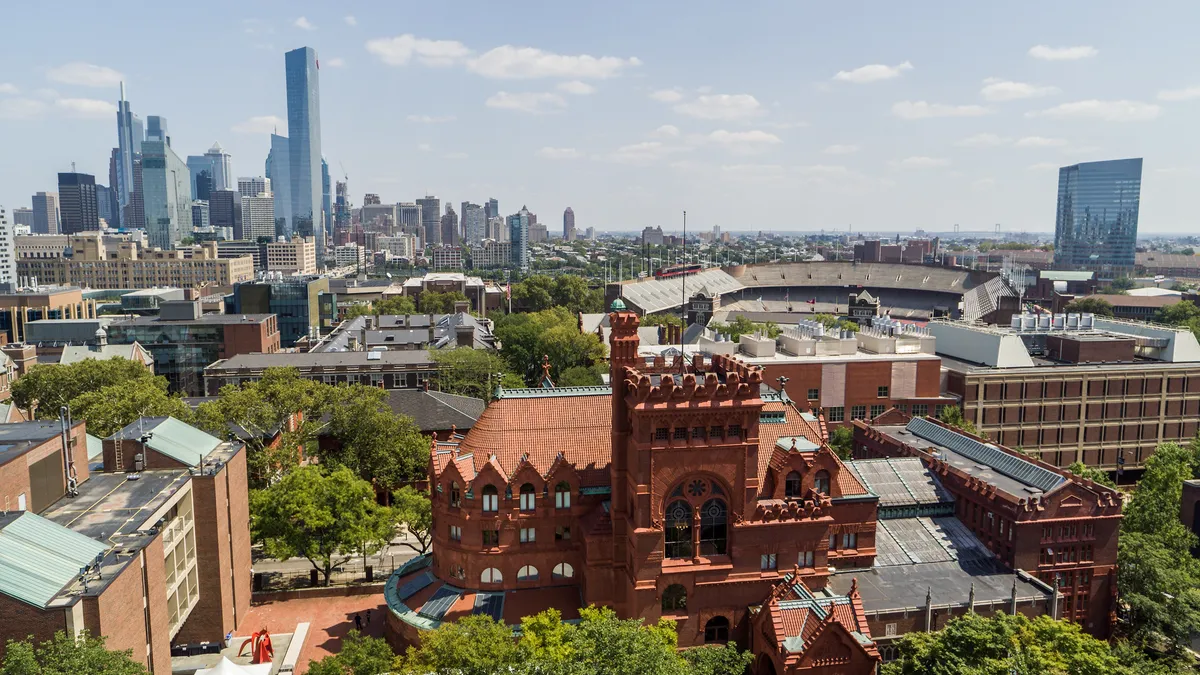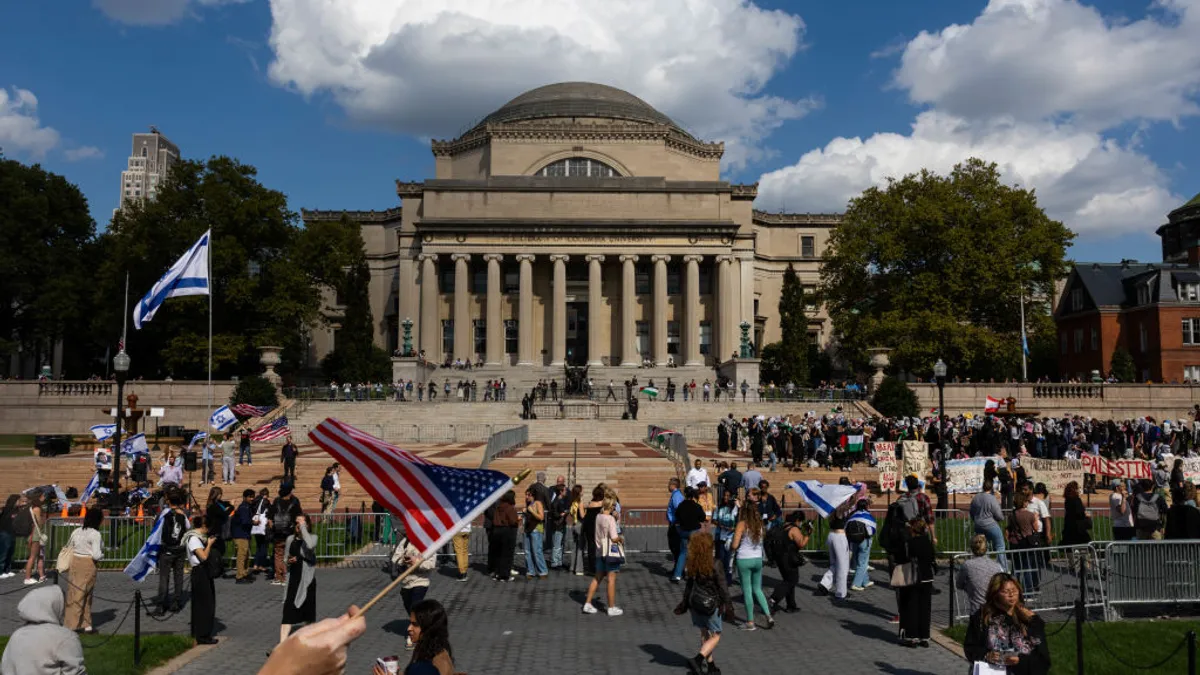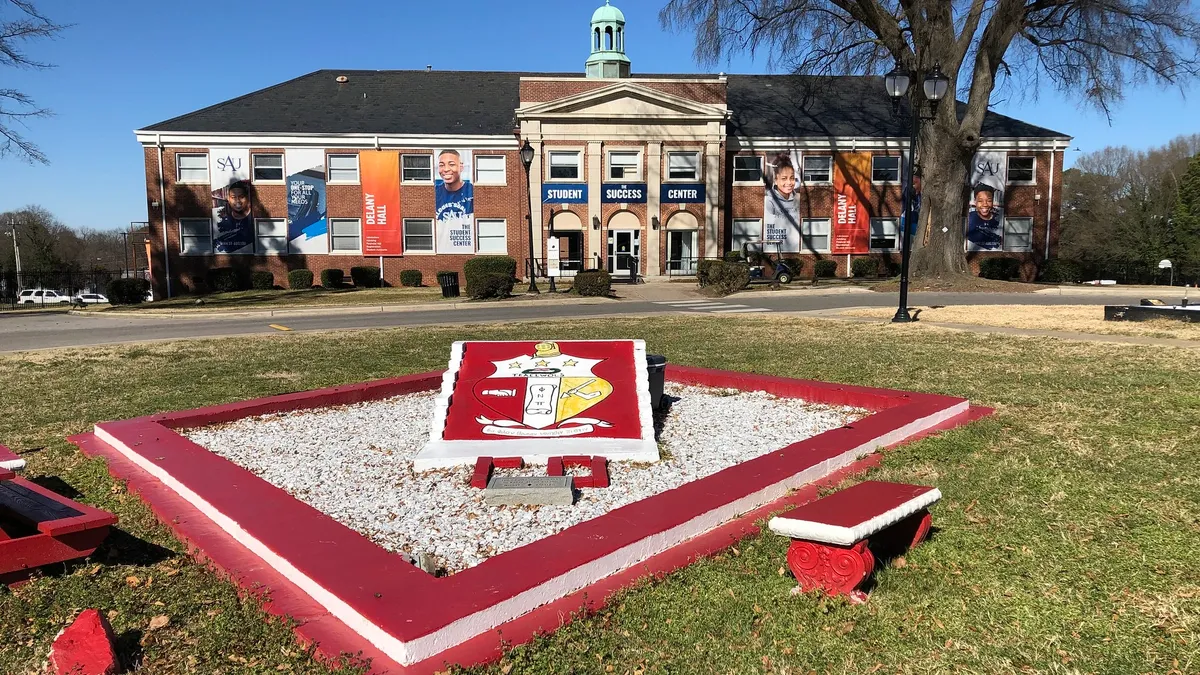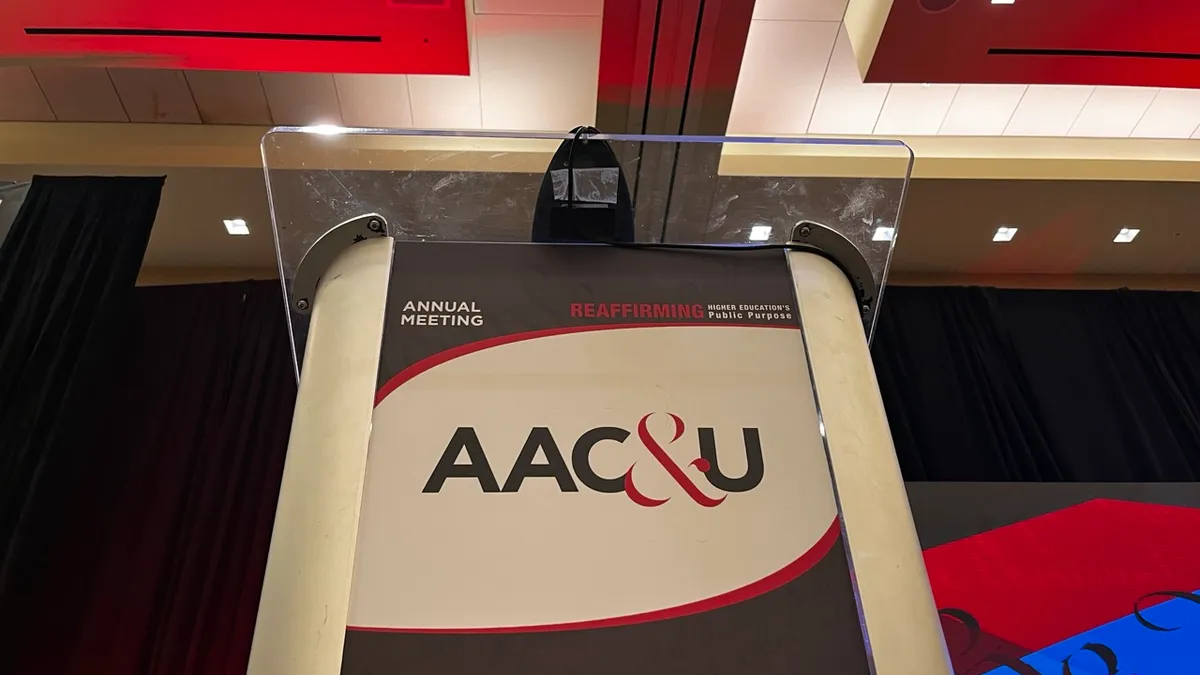Montana State University Billings will review the name of its main administration building, McMullen Hall, after recently rediscovered documents show the building's namesake vocally supported eugenics.
The step, announced March 3, follows a trend of colleges reevaluating their relationships with the people whose names label campus buildings. Higher ed leaders are questioning how to handle the legacies of people who played a hand in creating institutions but who also held discriminatory or other harmful views in word or deed.
Lynn McMullen served as the first president of MSU Billings, known during his tenure as Eastern Montana Normal School. He also suggested in 1935 that Germany would outpace other nations due to Adolf Hitler's support of eugenics and forced sterilization.
MSU Billings Chancellor Stefani Hicswa announced a university task force will investigate the issue further and provide her with a recommended course of action. The Montana University System Board of Regents would need to sign off on any move to rename the building.
The review in Montana started less than a month after the University of Minnesota Board of Regents approved a policy change that allows buildings to be renamed after 75 years, or sooner if issues arise around their namesakes.
Just over 30 buildings across U of Minnesota's five campuses will be eligible for renaming. Buildings named after donors are exempt from the 75-year review period due to contractual obligations varying by gift. Officials originally proposed a 100-year review period but received feedback indicating that was too long.
"A lot of us in higher education have evaluated and reevaluated what it means to name a building, what it means to honor a historical figure and what happens to that honor if a figure has a controversial and complicated legacy," Joan Gabel, U of Minnesota's president, said at a December board meeting.
Under the new process, students and employees can submit a renaming request if they believe a namesake conflicts with the university's values or could harm its reputation.
Adding flexibility to tradition
By imposing any time limit, the university has changed the default status on campus building names from permanent to temporary. This flexibility could allow colleges to react and adapt to new information.
"This means every new generation of the university gets input and can make new decisions," said Kirt von Daacke, assistant dean for the University of Virgina's College of Arts & Sciences and managing director of the Universities Studying Slavery consortium, an international cooperative of 88 colleges focused on researching and atoning for institutional ties to the slave trade.
"Universities are living, breathing institutions," von Daacke said. "We shouldn't assume that once you've named a building, it has to stay that way forever."
University of Virginia's president appointed a committee on names that recommended a building name reconsideration process in 2018, similar to the one U of Minnesota ultimately adopted. It called for honorific names to be reviewed every 25 years and donor namings to be reviewed every 75 years. The recommendation has not been established as policy yet, according to von Daacke.
"Universities are living, breathing institutions. We shouldn't assume that once you've named a building, it has to stay that way forever."

Kirt von Daacke
Universities Studying Slavery managing director
U of Minnesota's approach, while slightly stricter than the proposal at U of Virginia, still allows for flexibility with longer-term naming conversations. The Minnesota Board of Regents approved its final version as policy in an 11-1 vote Feb. 11. At that meeting, the board's governance and policy committee chair, Kodi Verhalen, reiterated that, much like the building names being discussed, the plan is not set in stone.
The board will track the adopted policy as it is tested through use and can make adjustments as necessary, Verhalen said.
Structuring the conversation
U of Minnesota has grappled with facilities naming since 2019, when its board of regents voted against renaming four campus buildings after more than a year of debate and lobbying. Three buildings are named after previous university leaders who worked to uphold racial segregation, with a fourth named for a former administrator who targeted Jewish, Black and communist students.
Regent David McMillan served on the board during the 2019 vote and said having a set procedure for regularly reviewing building names would have cut down on spent time and energy.
"The presence of this policy would have helped immeasurably through that process,'' McMillan told his colleagues at last month's meeting. "While it's not perfect, it's awfully good, and it's a far improvement from where we found ourselves then."
Having an established procedure with clear rules is important because it allows concerned parties to become part of the reconsideration and possible renaming processes, according to von Daacke.
"I don't mean that we should immediately blindly respond to every current criticism," he said. "But we should be listening and have a transparent process in which community members can object to a name."
On the same day MSU Billings announced its investigation, the U of Virginia renamed its Navy ROTC building to honor former Sen. John Warner. The building had previously been called Maury Hall, named for a Confederate soldier who left his position in the U.S. Navy to fight for the South.
The U of Minnesota, meanwhile, considered a handful of other colleges' renaming frameworks while designing its policy, including the University of Michigan's.
U of Michigan established a process for evaluating building renaming requests through an advisory committee on university history in 2017.
"We were watching requests for renamings occur at other universities and initiated a process here, so we had an infrastructure in place should we get requests in the future," said Rick Fitzgerald, a university spokesperson.
In the five years since, the procedure has led to two facilities being renamed. One more, the Yost Ice Arena, is currently under consideration for a name change.
Fielding Yost worked for the University of Michigan athletic department for four decades beginning in 1901, first as football coach and then as the athletics director. In 1934, Yost was involved in benching Michigan's only Black football player, Willis Ward, after Georgia Tech refused to play unless Michigan's team was all White.
"We were watching requests for renamings occur at other universities and initiated a process here, so we had an infrastructure in place should we get requests in the future."

Rick Fitzgerald
University of Michigan spokesperson
The naming committee determined this instance was emblematic of broader racial discrimination under Yost's leadership and has given a preliminary recommendation to remove his name from the ice area.
When U of Michigan created its name evaluation system, an automatic process that would have prompted naming reviews after set periods of time, like the one implemented at U of Minnesota or proposed at U of Virginia, was not discussed, according to Fitzgerald.
Different approaches to similar problems
In Georgia last year, two member universities of the Universities Studying Slavery consortium diverged in how they reacted to internal renaming recommendations.
Emory University, a private nonprofit institution in Atlanta, renamed multiple buildings at once as part of a larger reckoning with racism and dispossession in the institution's history. The changes came based on recommendations from a university task force dedicated to disenfranchised populations, according to a letter from Emory President Gregory Fenves.
The Longstreet-Means residence hall, named in honor of former Emory College president Augustus Baldwin Longstreet, was renamed Eagle Hall.
"The Committee's research shows that Longstreet used his platform as Emory's president to promote pro-slavery views," Fenves said in his letter. "He opposed abolition and strongly defended slavery and secession. It is inappropriate for his name to continue to be memorialized in a place of honor on our campus."
The university also renamed Language Hall in honor of Horace Johnson Jr. Johnson was a jurist and Emory alumunus who made extraordinary contributions to Atlanta and the surrounding area where the university is located, according to the committee.
"We fail in our own mission if we are afraid to turn the lenses of scholarly inquiry onto our built landscape."

Kirt von Daacke
Universities Studying Slavery managing director
Unlike at Emory, the University System of Georgia Board of Regents declined to rename any of 75 buildings recommended by an advisory group in 2021.
"The purpose of history is to instruct," the board said in a statement. "History can teach us important lessons, lessons that if understood and applied make Georgia and its people stronger."
That tension between seeing a building name as teaching history or as idealizing it is at the root of most debate on the subject, said von Daacke.
"Our very mission is to educate," he said. "We fail in our own mission if we are afraid to turn the lenses of scholarly inquiry onto our built landscape. We are not setting a good example for our students if we don't. It doesn't have to be removed and recontextualized as the end result, but the work needs to be done and in a visible way."



